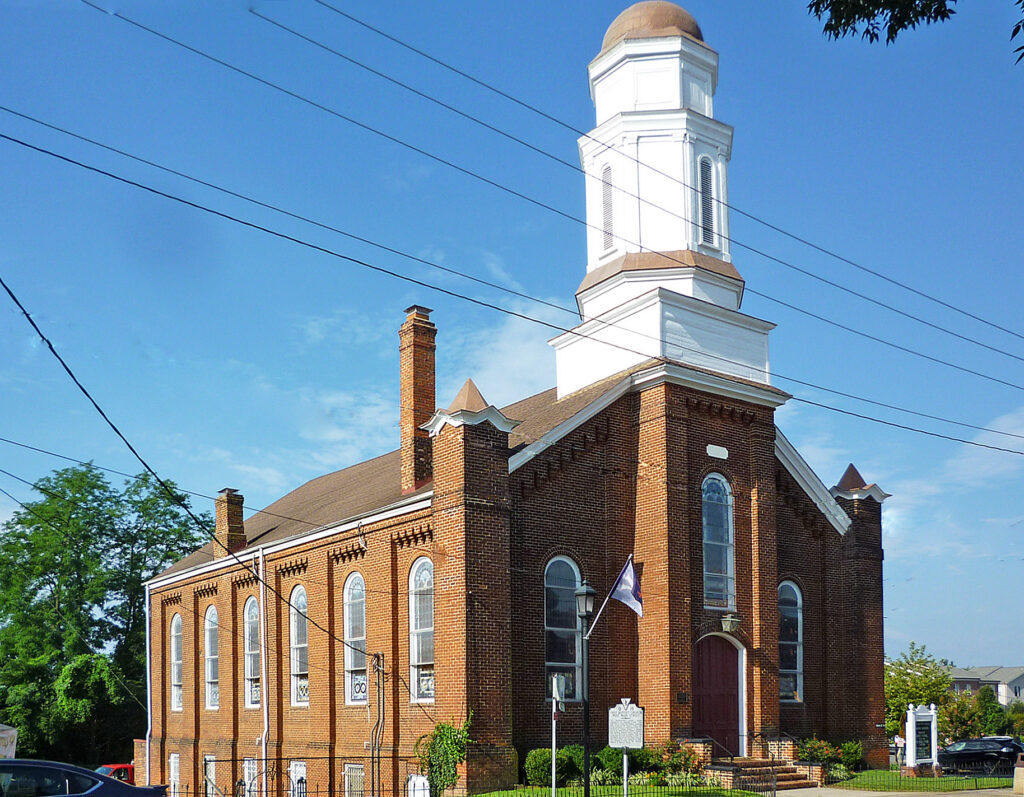by Emily Miller, 2022 Undergraduate Summer Research Fellow in Lived Theology
With the start of the Fall semester here at the University, I’m brought to the end of my summer internship with the Project on Lived Theology, and for the time being am pausing my research on First Baptist Church on Park Street and First Baptist Church on Main Street. I learned more this Summer through my research than I ever could have imagined and am beyond grateful for the opportunity that the Project has offered to me. I’ve come to realize that the ground I walk everyday in our dynamic, alive Charlottesville bears the remarkable stories of people who dared to chase freedom, people who fought, people who kept the faith in pursuit of the holy. The legacies of our local heroes traverse the bounds of time and I see it all around me: First Baptist on Main, William and Isabella Gibbons Residential Hall, letters from Fairfax Taylor preserved in the Albemarle Historical Society.
But for every legacy of freedom, there runs parallel a legacy of oppression. I sit in ornate Old Cabell Hall as I write this article, a UVA academic building named for a family of particularly racist slave owners and white supremacists. As I wrote about a month ago, the Cabell story intertwines, painfully and ever so intimately, with the story of First Baptist. Thomas Jefferson, the highly venerated ‘king’ of the University of Virginia even today, kept close contact with the Cabells and communicated frequently with the them regarding the trading and sale of slaves. Charlottesville is the site of many an atrocity, from the treatment of African American bodies in anatomical labs, to the construction of academic structures over slave gravesites, to the horrific attacks that took place in August 2017. For many, 2017 came as a moment of great clarity (though it should not have had to come at all): no matter how far the work of Charlottesville legends may have taken us, there is still much, much further to go.
If there is anything I have learned from this project that I know I’ll hold onto, it is that the heavenly promise of freedom can take a variety of forms. I’m reminded of what Pat Edwards told me when I visited First Baptist Church on Main Street: the freedom of the original black members of Charlottesville Baptist Church to form their own church was not just a freedom from, “but a freedom toward”- toward autonomy, agency, education, and worship. Similarly, Lottie Moon fought for her freedom to live out and share the Gospel without barriers for herself or other women- another very particular kind of freedom. All of these are forms, in my opinion, of deeply holy and spiritual liberation; the hand of God present as the Gospel is spread with increasing accessibility and joy. I’m encouraged by these echoes of freedom I can hear when I walk down Charlottesville’s West Main Street.
Going forward, I hope to continue to engage with the story of First Baptist in further research, perhaps culminating in a Distinguished Major thesis next year. Many more twists and turns that I did not have time to cover over just one Summer remain in this story, and I hope to explore them over the course of the next couple years (so rest assured, to those dear readers of mine who have been devoted to my posts, that there is more to come!).
I have many people to thank for this amazing opportunity with the Project on Lived Theology. My particular gratitude goes to Guy Aiken, Charles Marsh, Jessica Seibert, Miranda Burnett, Mike Dickens, Pat Edwards, and Rob Pochek. Without any of these people, this thrilling and invigorating experience would not have been possible.
Learn more about the Emily’s Undergraduate Summer Research Fellowship in Lived Theology here.
The Project on Lived Theology at the University of Virginia is a research initiative, whose mission is to study the social consequences of theological ideas for the sake of a more just and compassionate world.

